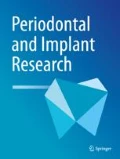Abstract
The management of temporomandibular joint conditions has changed dramatically since the 1970s, as the knowledge of the physiology, pathology, and evidence base has developed for the temporomandibular joint. One of the main barriers for this progression was the lack of consensus for specific definitions of different diagnoses associated with TMD conditions. The most recent DC/TMD guidelines have refined the different diagnoses so that clinicians can apply these criteria during the examination, diagnosis and management of TMD patients. Most early management strategies for articular disc displacements were aimed at surgically repositioning the articular disc or utilizing an oral appliance to advance the mandible to a point where the condyle was repositioned on the articular disc. These early management approaches often failed to produce the reduction of the pain and dysfunction that both the health care provider and the patient desired. Slowly, management strategies have evolved into less invasive, more patient centered, and more multidisciplinary as the multifactorial nature of temporomandibular joint conditions became evident. This article reviews the specific DC/TMD diagnoses and the evidence base for the utilization of different management strategies.
Similar content being viewed by others
Further reading
Gremillion HA, Klasser GD (2018) Temporomandibular disorders. Temporomandibular Jt. https://doi.org/10.1007/978-3-319-57247-5_9
Armijo-Olivo S, Pitance L, Singh V, Neto F, Thie N, Michelotti A (2016) Effectiveness of manual therapy and therapeutic exercise for temporomandibular disorders: systematic review and meta-analysis. Phys Ther 96(1):9–25
Beal BR, Wallace MS (2016) An overview of pharmacologic management of chronic pain. Med Clin N Am 100:65–79
Derry S, Conaghan P, Da Silva JAP, Wiffen PJ, Moore RA (2016) Topical NSAIDS for chronic musculoskeletal pain in adults (review). Cochrane Database Syst Rev 4:1–113
Nitzan DW, Dolwick MF, Martinez GA (1991) Temporomandibular joint arthrocentesis: a simplified treatment for severe, limited mouth opening. J Oral Maxillofac Surg 49(11):1163–1167
Wolford LM, Mercuri LG, Schneiderman ED et al (2015) Twenty year follow-up study on a patient fitted temporomandibular joint prosthesis: the Techmedica/TMJConcepts device. J Oral Maxillofac Surg 73(5):952–960
Murakami K, Moriya Y, Goto K, Segami N (1996) Four-year follow-up study of temporomandibular joint arthroscopic surgery for advanced stage internal derangements. J Oral Maxillofac Surg. 54:285–290
Larheim TA, Westesson PL, Sano T (2001) Temporomandibular joint disc displacement: comparison in asymptomatic volunteers and patients. Radiology 218:428–432
Author information
Authors and Affiliations
Corresponding author
Rights and permissions
About this article
Cite this article
Spencer, C.J., Neary, J.P. Management of temporomandibular joint conditions. Clin Dent Rev 2, 25 (2018). https://doi.org/10.1007/s41894-018-0038-0
Received:
Accepted:
Published:
DOI: https://doi.org/10.1007/s41894-018-0038-0




